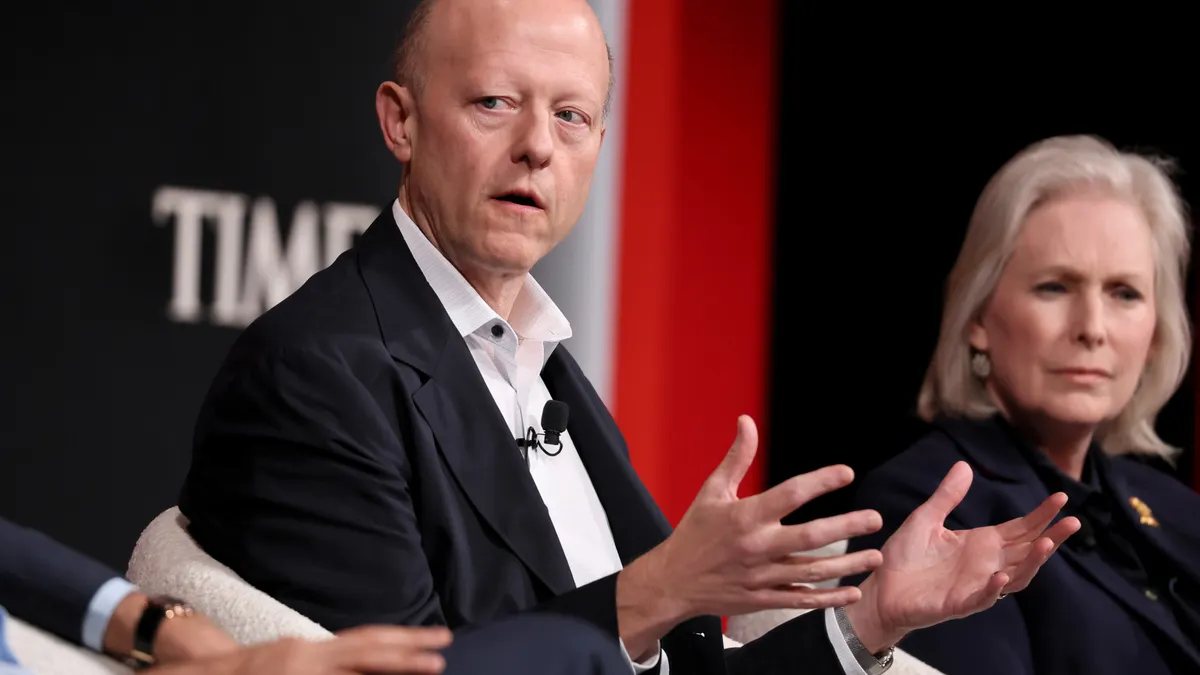Traditionally a back-office role, IT departments and CIOs are now building customer-facing apps and shaping end-user experience.
As technology and digital experiences become more central to business strategy, CIOs, such as Rohan Amin of JPMorgan Chase, are filling gaps between tech strategy and customer experience.
To meet customers where they are, Chase reached beyond banking to capture a full picture of financial health, Amin told CIO Dive in an interview.
The Snapshot feature in Chase's mobile app lets customers see statistics about their financial journeys and spending trends.
"That's an example of [being] customer-centric. It's literally built personalized to you, and you get insights, very specific to your engagement with the bank," Amin said.
The Snapshot offering also shows the IT team's iterative approach to developing customer-centric tools, Amin said. The team takes uses agile fundamentals to make updates based on customer feedback.
A customer-centric CIO approaches technology tasks with an eye toward how the customer-centric efforts will ultimately impact the business's end user, as opposed to the employee.
"Digital and technology are just continuing to increase in the level of importance for customers and expectations that customers have, and so we have been stepping up to that challenge, as well," Amin said.
The importance of technology and digital experiences for the end user, in part driven by the pandemic, uplifted the CIO as an IT and tech expert central to business strategy.
As technology advances and becomes more central to businesses, "business leaders are looking for the CIO to be the right hand and be their counsel on what could they leverage, what makes most sense, what is a point of competitive advantage for the organization," Miriam McLemore, enterprise strategist at Amazon Web Services and a former corporate CIO at Coca-Cola, told CIO Dive.
The importance of technology, in other words, elevated CIOs as strategic business partners, pushing them to take a more customer-centric view of how the business implements technology for the end user.
Amin and the IT team at Chase created an agile product development cycle organizing the IT team into customer-centric teams focused on creating tools that benefit the customer journey.
"There's roughly 87 product teams which now construct all of the experiences that customers go through as part of Chase," Amin said. The teams consider the end-to-end customer journey to push out new products in line with customer needs.
Becoming a customer-centric CIO
A customer-centric mindset takes IT away from only focusing on internal business processes and gives the department a stake in product development that increases focus on the end user.
"It starts with making sure that you get the right ownership and alignment and partnership with the business," Amin said.
Amin secured the technology-business partnership at Chase by demonstrating the tech journey behind projects customers use. "A seemingly simple button inside the app has a fair amount of complexity to actually make that happen, and I took the business on a journey of understanding how do we actually bring that button to life," Amin said.
About 81% of IT professionals said they've implemented new tech to enable better customer experiences and interactions, according to the 2021 State of the CIO report by IDG surveying 812 heads of IT. Customer experience technologies drive 2021 tech initiatives for 30% of respondents.
Data is an area where CIOs can test a more customer-centric approach to the role. Using customer data and feedback to build better products is a place where CIOs can shine.
"The CIO is often at the heart of that, helping the [company] sort through its data strategy, building a common language," McLemore said.
Becoming a customer-centric CIO "is, first, a shift in mindset," McLemore said. Then, CIOs should look to the barriers they need to overcome to becoming more customer-centric and find the business partners excited about the shift to make that change.
"You need your team as a CIO to have business acumen, but certainly you also need digital fluency on the part of other business leaders," McLemore said.
Digital fluency makes it easier for the CIOs to be customer-centric because the business leaders have a better understanding of the value and functionality of tech.















